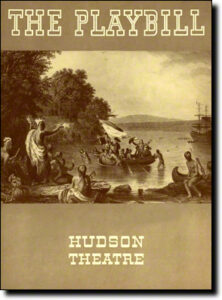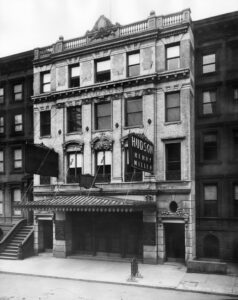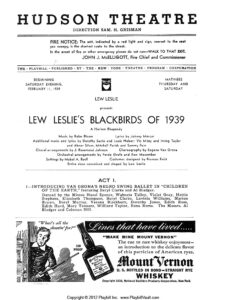From Broadway to Ballet and Black and Lew Leslie’s Blackbirds of 1939


Lew Leslie’s Blackbirds of 1939 was the last musical review in his series of all-black Blackbirds productions. Leslie was commonly known as “Black Ziegfeld”, despite being white, because his shows featured Black performers and gave them a platform that they did not ordinarily have. Starting from its debut on February 11, 1939 to its closing on February 18, 1939, Blackbird’s of 1939 ran for 9 performances at the Hudson Theater of New York City and it was designed and supervised by Mabel A. Buell. Blackbirds of 1939 featured the Von Grona Negro Swing Ballet which was comprised of prominent Black ballet dancers and led by Eugene Van Grona, the founder of the American Negro Ballet.
Blackbirds of 1939 is a musical that takes inspiration from vaudeville. The show has 2 acts which are each comprised of a series of musical and dance performances. Act 1 has 12 segments and introduces Von Grona’s Negro Swing Ballet, featuring Beryl Clark and Al Bledger, in Children of the Earth. Act 2 has 9 segments, including the finale, and features the J. Rosamond Johnson Choir in addition to Von Grona’s Swing Ballet.
Sources:
Blackbirds of 1939, Playbill
Blackbirds of 1939, Jazz Standards
More about Blackbirds of 1939


Broadway Theater: The Hudson Theater of New York City lies in the Theater District of Midtown Manhattan, New York City. It is one of the oldest surviving Broadway venues and was constructed between 1902-1903. The theater has 970 seats across three levels and it consists of a ground-level orchestra and two overhanging balconies. It was operated by Henry B. Harris until he died on the sinking of the Titanic in 1912. The theater reopened as a Broadway venue in 2017 and is currently operated by the Ambassador Theater Group.
Staging and Production: Lew Leslie
Dancers: Marion Brown, Dorothy Jones, Evelyn Pilcher, Edith Ross, Hazel Spence, Lavinia Williams, Alfred (Al) Bledger, Edith Hurd, Muriel Cook, and Coleman Hill
Music: Rube Bloom
Lyrics: Johnny Mercer
Orchestral Arrangements: Ferde Grode and Ken Macomber
Setting: Mabel A. Buell
Costumes: Frances Feist
Choral Arrangements: J. Rosemond Johnson
Choreography: Eugene Van Grona and Von Grona’s Negro Swing Ballet
Sources:
The Hudson Theater, Wikipedia
The Hudson Theater, New York Times
More about Von Grona’s Negro Swing Ballet in Blackbirds of 1939
Eugene Von Grona trained in dance in Germany and arrived in New York City in 1928. He formed the American Negro Ballet in 1934 after seeing the zeal of the artists working in Harlem, noting the new type of dance energy he saw in them that was lacking in European dancers. He thought that the dancers he found for his company “didn’t have the opportunity” for technique classes and so he gave it to them at the American Negro Ballet. ANB was the first professional company to feature concert dance with Black members on a scale that garnered acceptance from the media as well as criticism.
They used the term “ballet” to describe all the dances they were doing, though not a classical ballet company. The American Negro Ballet Company debuted at the Lafayette Theater in Harlem on November 21, 1937 but the company survived for barely a year before its demise in 1938. In 1939, Van Grona revived the American Negro Ballet Company and renamed it “Von Grona’s Swing Ballet” when the company appeared in the Broadway show, Blackbirds of 1939.
In 1939, the members of the company were Valerie Cavell, Marion Brown, Beryl Clarke, Viola Gibson, Dorothy Jones, Harriet Oliver, Evelyn Pilcher, Edith Ross, Pearl Spears, Hazel Spence, Ettie Stephens, Willard Taylor, Elizabeth Thompson, Lavinia Williams, Wahneta Talley, Teddy Allen, Alfred (Al) Bledger, Jon Edward, Anthony Fleming, Frank Green, Coleman Hill, James Smith, and Harry Young.
Sources:
“Which was the first?” A historical essay on the first Black Dance Company in the USA
 Morinsola Tinubu
Morinsola Tinubu


